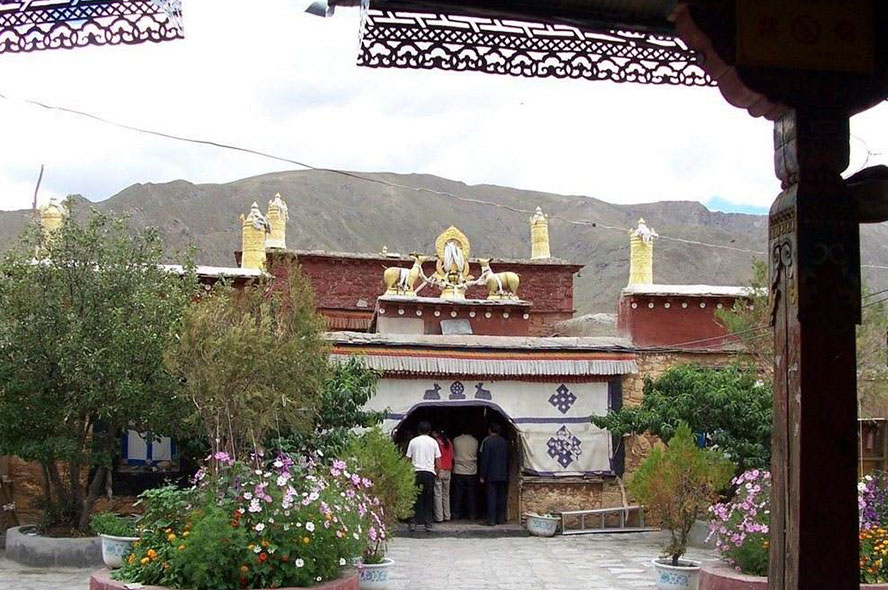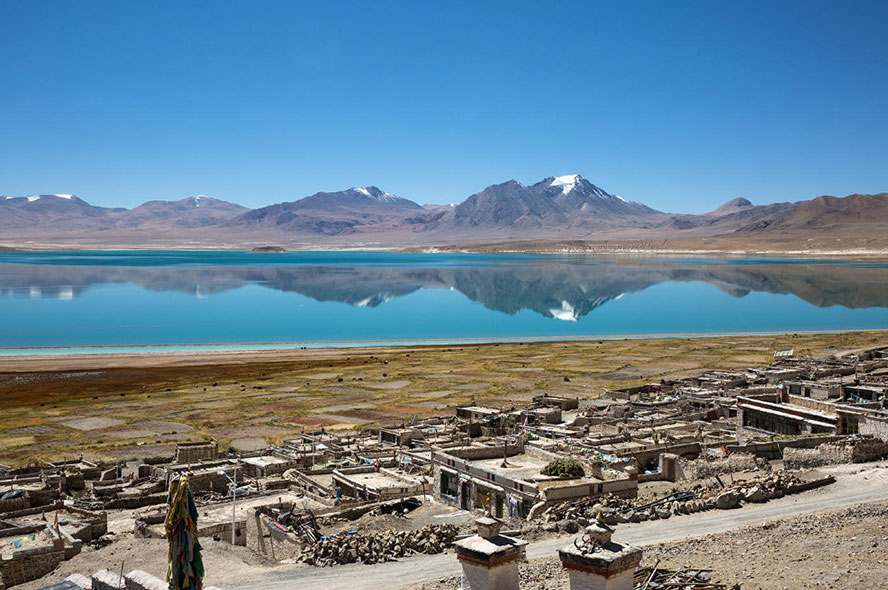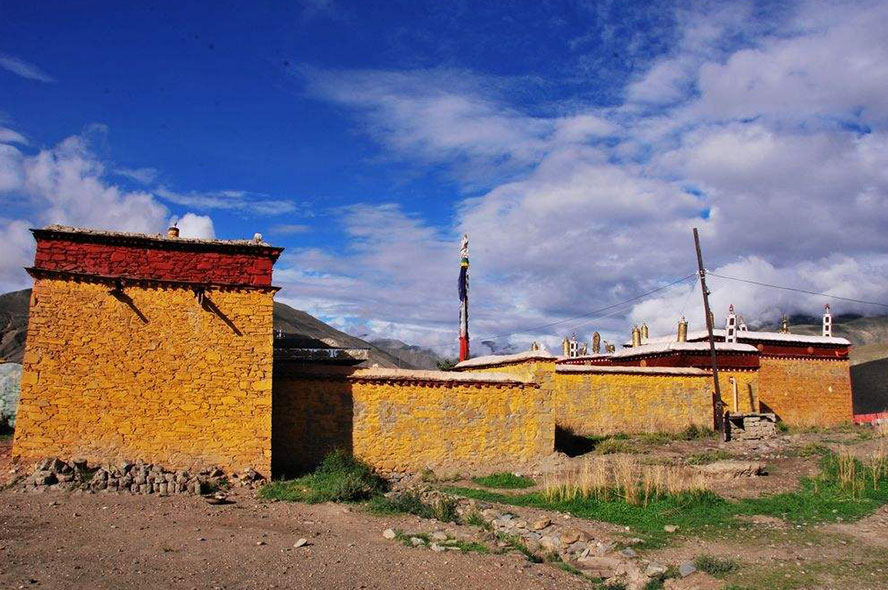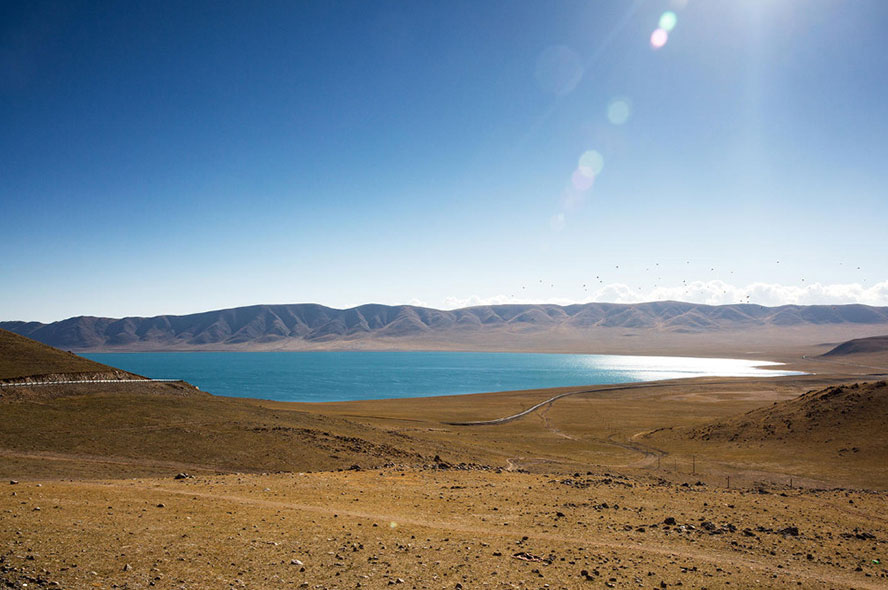Mount Kailash is a 6714-meter (22,028 feet) high peak, which forms part of the Himalaya in the Tibet Autonomous Region of China.
Buddhists call it Kangri Rinpoche, which means 'The Precious Snow Mountain'. Mount Kailash is considered to be sacred in four major religions of Tibet : Bon, Buddhism, Hinduism and Jainism. In ancient texts, it is referred to as the center of the world. According to all religions, Mount Kailash is recognized as the most sacred mountain and pilgrims believe that one Mount Kailash tour with a trek around the mount can erase all sins of a lifetime.
For a photographer, Mount Kailash has various shooting materials. It is favored by landscape photographers all over the world because of its pyramid-shaped hilltop. The mountain top is covered with snow all year round. There are four precipices on the top of this huge and solemn mountain, that makes people deeply revered.
As well, there are two mysterious lakes, 20 kilometers far away from the mountain : Lake Manasarovar and Lake Rakshastal. These two lakes make the holy mountain looks more beautiful. Mount Kailash is the paradise for many animals, such as wild donkey, yak, Tibetan antelope, swan and black necked Crane. Moreover, the devout pilgrims also are good material for artistic creation.
Recommended Itinerary for Mount Kailash Photographing Guide
Most photographers take 13 days to for a Lhasa to Mount Kailash round trip, passing by other attractions which are also excellent scenes for taking a photo, such as the Potala Palace, Barkhor Street, Karola Glacier, Lake Yamdrok and Manasarovar, ruins of Guge Kingdom and Tsada Clay Forest. Many other tourists exclude the Guge Kingdom from their Mount Kailash tours, but it is recommended for photographers, as the frescos and sculptures in the ancient relics are preserved very well.
The Highlights during the 13-Day Photography Tour
Mount Kailash
Although the best time of Mount Kailash trek is from April to October, however, the best months to shoot Mount Kailash are only April, May, June, September and October. During these months, there is little clouds and the mountain top can be seen clearly. While remaining light of the setting sun shines on the top of Mount Kailash, setting off its mystery. So sunset is the best time to press your shutter button.
The most-recommended place to take the photo of Mount Kailash is Lhachu Valley. Being 8 kilometers away from Mount Kailash, the steep cliffs, prayer flags and winding riverbeds in the valley are perfect natural foreground to shoot the magnificent Mount Kailash. Another great place to take a shoot of the Mount Kailash sunset is the Dirapuk Monastery. Furthermore, Mount Nemo Nanyi, opposite the Mount Kailash could be another choice to shoot the mount.
Lake Yamdrok
Lake Yamdork, one of the three largest sacred lakes in Tibet, which is famous for its dark green lake and picturesque winding road along the lake. Yaks, horses and tents of Tibetan nomads around the lake provide photographers unparalleled pastoral scene. The best place to shoot Lake Yamdrok is the Gamba La pass. In there, you can take a shoot of greenish-blue lake with different layers and snow-capped mountain. Besides, the roads near lakeside is another good choice to take some close-up shots of the lake.
The best season to take the photo of Lake Yamdrok is spring and autumn, during these seasons, the visibility is high. The lake is sparking under the sun, and waves created by the wind are like silk flying in the sky. If you have time to camping near the lake, don’t miss the sunset and sunrise of the lake.
Lake Manasarovar
Lake Manasarovar, the highest freshwater lake in the world, which lies at 4,590 m (15,060 ft) above the sea level. Because of high mountain terrain, the crystal clear lake is formed, for the four major religions of Tibet : Bon, Buddhism, Hinduism and Jainism, the lake is revered as a sacred place . There are five monasteries and four bath pavilions around Lake Manasarovar. The Buddhists, Hinduists and Jains believe taking a bath in the lake can wash their sin away.
Among the monasteries near Lake Manasarova, it is generally believed that two of them are the first choice for photography. One is the Chiu Monastery, located to the northwest of the lake Manasarova. The flying prayer flags, piles of Marnyi stones and yak bones are the best materials for shooting the foreground of the Lake Manasarovar. There is a steep hill in the north of Chiu Monastery which leads to some small white stupas, it can also be used as a foreground for Mount Kailash.
The other monastery is the Chugu Monastery, in the south of Lake Manasarovar, which is famous as the best place to shoot the visually overlapping part of Lake Manasarova and Mount Kailash. Sunrise and sunset are the best shooting times. The herdsmen usually drive their yaks and sheep back before sunset. This view is a bonus for photographers. You can also stroll to the north of Jiwu Temple, you can see the Mount Memo Nani in the distance, it’s the highest mountain of Ngari.
Find More than the Manasarovar
As Lake Manasarova is adjacent to its twin lake “Lake Rakshastal”, you may use an ultra–wide lens to shoot Mount Memo Nani and Lake Rakshastal at the roadside of highway from Burang to Pulan. The deep blue lake, the golden sand dunes and the remote mount Kailash constitute a fascinating picture.
Tsada Clay Forest
Tsada Clay Forest is formed by the crustal movement of Himalayas, meanwhile, it’s where Guge and Zhang Zhung Kingdoms were established. Generally, it will cost around 4 days to have all shots taken there.
Before going to the valley of Tsada Clay Forest, you can take photos of the clay forest and snow-capped Himalayas at the top of valley, where is 22 away from from the downtown of Tsada.
Explore the Ancient Guge Kingdom
Ruins of Guge Kingdom, near the Clay Forest, is also an important tourist attraction. In the afternoon, you can go to Guge Kingdom first and then wait till sunset to catch the beauty of this lost civilization.
Top 5 Tips for Photographers to Plan a Tour to Mount Kailash
1. The travel documents needed for international tourists: If you prefer to visit Mount Kailash from Lhasa, it requires the essential document entry letter-Tibet Travel Permit. If you plan to go to this border area, you still need to obtain a border permit. You will also need to obtain military approval if you go to Mount Kailash. If you decide to visit Mount Kailash from Kathmandu, in addition to the above three documents, you need to have China group visa to enter Tibet. You need to set aside at least 3 days in Kathmandu to process Group Visa with your original passport.
2. The weather of Mount Kailash is constantly changing, please check the weather forecast in time and bring heavy clothes to keep warm.
3. We strongly recommend you bring some medicines that prevent altitude sickness.
4. Sunglasses, sunscreen, lip balm and comfortable hats are also essential, they can help you to resist strong ultraviolet rays and cold wind.
5. Trekking light is important, if your luggage is heavy, you can rent a yak, horse or porter to help you carry the luggage.














































 Data in submission...
Data in submission...